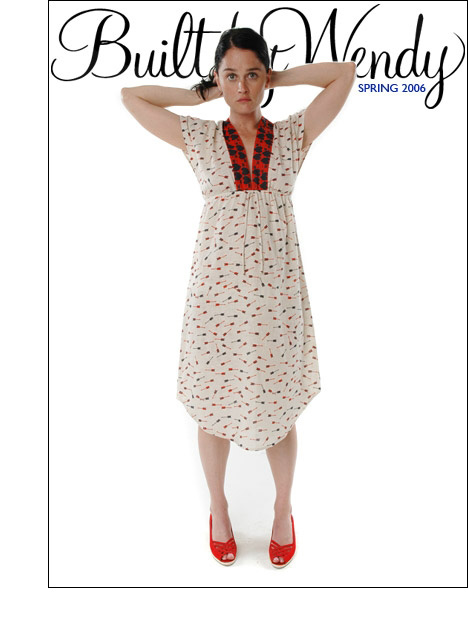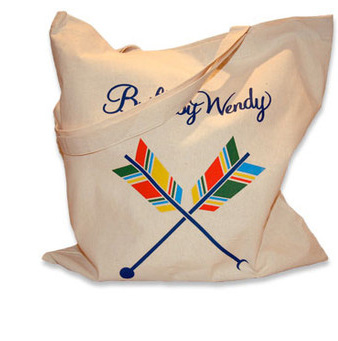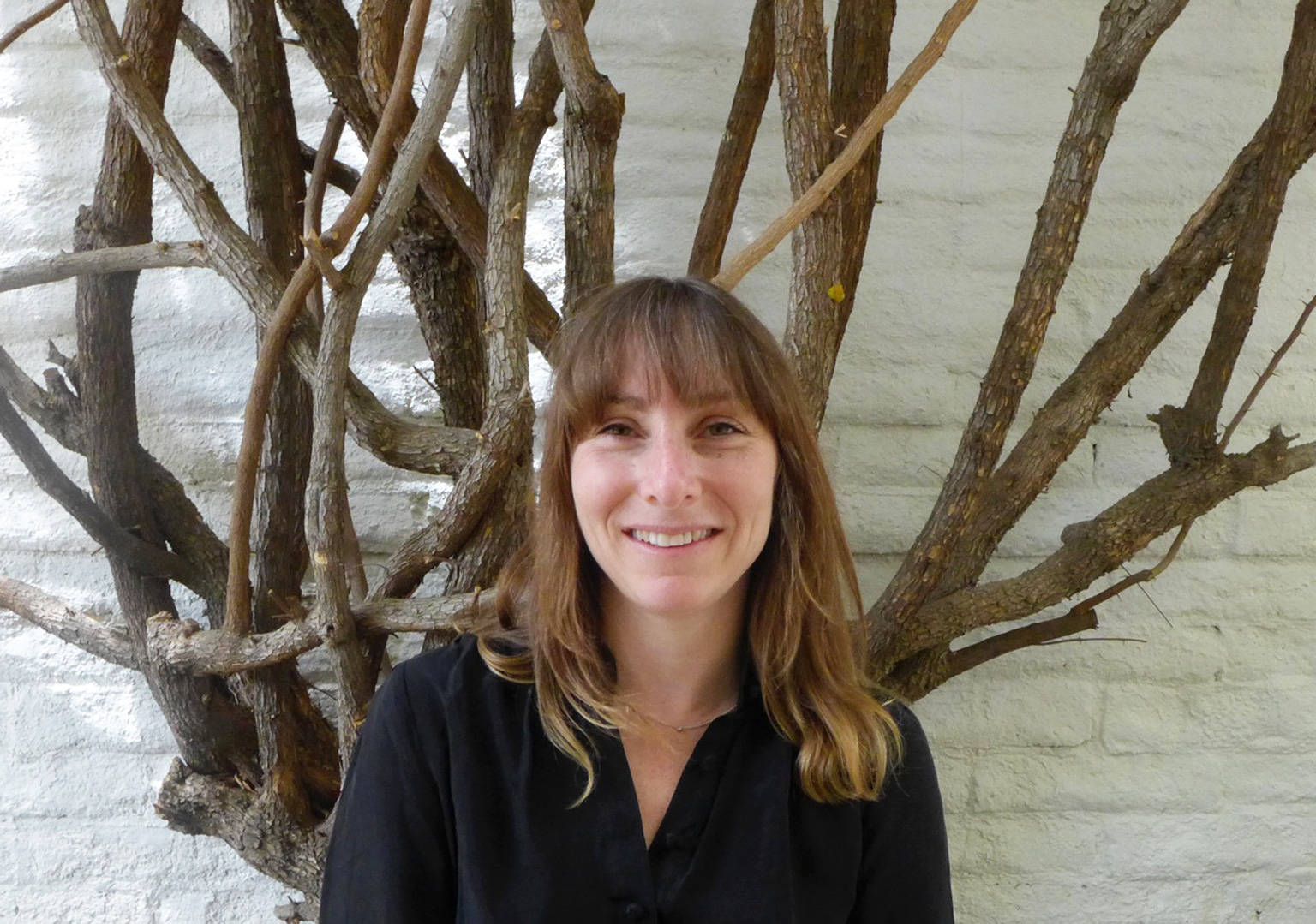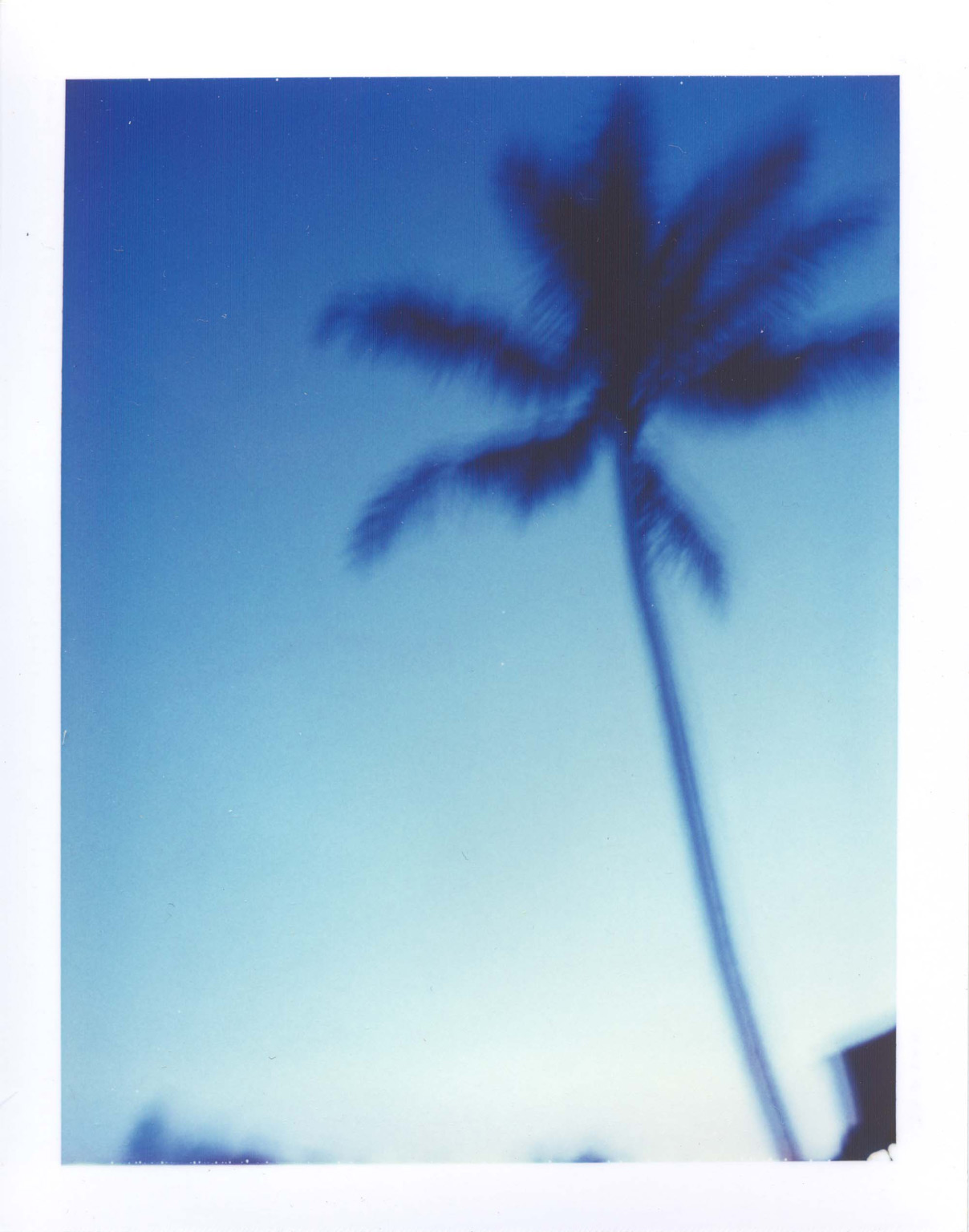If you were in an indie band in the 90s—which many of us were—and at least one band member wasn’t sporting a Built By Wendy guitar strap, you could expect to politely be asked to leave the stage. Politely, because, you know, indie rock, but still, they were nearly ubiquitous with the indie music scene of the time.
Rather than just prove to be a flash in the pan, though, Built By Wendy founder + designer Wendy Mullin took the interest in her hand-sewn guitar straps and turned it into an internationally recognized, yet still independently run fashion house with multiple storefronts and scores of fans among the indie music crowd as well as Hollywood celebs.
Over the past few years, Built By Wendy’s felt the same pressure that many small design houses have felt and Wendy’s evolved with both that and changes in her own life. We took a moment to catch up with Wendy to talk about the shifting landscape for small designers, the evolution of Built By Wendy, and her just-announced resort wear line, Soft Rock.
raven + crow: Alright, so, first off, thanks for taking some time to talk with us. Like many, we’re long-time fans—we used to buy your guitar straps back in the day. You made one for Katie that was cherry red and used a bunch of Wonder Woman comics of her kicking ass. She still has it to this day. How did you get started making those?
Wendy Mullin: I had a lot of friends who played guitar and I thought the straps were sort of boring so I took one and started sewing vinyl and pockets and things on it. I also worked at a couple record stores, so I was able to sell them there and get a quick response.
Makes sense. But then how does one go from making highly sought after guitar straps to running a fashion line with multiple storefronts in multiple cities? I know you used to work with Kim at X-Girl—another line that we loved. Did that sort of introduce you to the fashion world?
Actually, I was making clothes and selling them at a few shops starting in 1991, it was only when I was living in New York and made the guitar straps did people start writing about what I was doing. Kim and Thurston used to shop at the record store I worked at so I was friendly with them. They bought my clothing and guitar straps, then later, when Kim did X-Girl, I ran into her at a show and asked if she needed help, so I worked with them for a bit on a freelance basis while I was doing my own thing. Then Mike D asked me to do some designs for X-Large.
Man. I’m pretty sure someone should turn all of that into some sort excellent memoir of the that era in New York. It’s so seminal for so many of us still. So, relatively recently you moved Built by Wendy to an online + wholesale only model. Sad for us to see the storefronts close, but it seems like a move a lot of people are making of late. Is it something you did out of necessity or was it just out of a desire to simplify things?
A bit of both. New York has gotten so expensive, so it’s really difficult to have a small indie business. I know so many artists and small businesses that just can’t sustain all the costs—workman’s comp, liability insurance, payroll taxes , high rents, compliance with ridiculous outdated policies in the city that are pushing small people out. I could have reopened in a cheaper neighborhood but I was tired of having a shop after having a kid. I needed to simplify.
Yeah, for a while there, you had multiple stores in NYC and a shop in LA. I feel like we saw a number of designers we like feeling this whole sustainable growth thing out—’How big do we grow how quickly where and when without totally collapsing on ourselves.’ It seems like the most stressful part of running a successful product-based business. Has that been trying over the years? I could see just wanting to focus on the…art or design of things, less the business.
I pretty much did everything myself, from designing to production to patterns to overseeing the running of the business. It was too much for anyone, really. I didn’t have any partners or financing so my model of business was just not really viable anymore. You can only go so far doing it all on your own.
Yeah, hard not to burn out on what you love doing that. I feel like the whole economic downturn really hurt specifically independent designers, especially in New York, where things just got even further apart in terms of the haves vs the have-nots. So many of our friends who had their own lines or shops had to shutter in the past five or so years. How do you see things having changed for independent fashion designers in recent times?
For many years I always said that my company really should not exist. I feel like I was the last of my peers to hold on as it just really wasn’t feasible to have stores with expensive rents and stocking a lot of inventory with no investors or partners. When I started, there wasn’t really the market there is now. There were teen clothing and designers but there wasn’t this boutiquey market that is quite saturated now. With technology and easy communication, almost anyone if they have money can do a clothing line and get it produced. There is just so much clothing out there and so many options. And people shop so differently—people who shop at Bergdorf’s will also order stuff from Urban Outfitters online. It used to not be that way. And if you are an indie designer then you have bigger companies buying your stuff and knocking you off thus diluting the coolness of your product.
It’s hard not to get depressed thinking about that.
I’ve seen your early looks described as something along the lines of ‘sexy elementary school teacher.’ Be that accurate or not…or creepy or not, I think it’s safe to say the Built by Wendy look evolved a lot over the years. Is that something you see as deliberate or did the looks change more as your tastes changed?
 I’m hoping that any designer who has been designing over 20 years has evolved. I started at 20 and now I’m over 40 so what I like to wear and what inspires me has evolved over the years. But mainly it’s financial. When I was 20, I couldn’t afford to design my own fabrics and prints or afford nicer fabrics, so I just did what I could with what I had available to me. Most fabric houses had very large minimum orders, so even having access to fabric was difficult. As I grew financially, I was able to get my own colors dyed or buy silk or cashmere and could have access to mills because I could buy their minimums.
I’m hoping that any designer who has been designing over 20 years has evolved. I started at 20 and now I’m over 40 so what I like to wear and what inspires me has evolved over the years. But mainly it’s financial. When I was 20, I couldn’t afford to design my own fabrics and prints or afford nicer fabrics, so I just did what I could with what I had available to me. Most fabric houses had very large minimum orders, so even having access to fabric was difficult. As I grew financially, I was able to get my own colors dyed or buy silk or cashmere and could have access to mills because I could buy their minimums.
I love that you can visit your site and scroll down from recent collections all the way back to your 2003 collection, which is when we first moved to New York. It’s like a visual fashion chronology or something. To this day, Katie’s got this awesome black, long-sleeved dress you did back in the early aughts, I think, in this Japanese print with floral borders that’s still totally going strong. No question there…just…awesome dress.
THANKS!
You just did a kids line last year, right? I know you recently had a child yourself—congrats, by the way. I assume this is somehow related? Were you just like, “I need some cool kids’ clothes, man. Baby Gap is NOT cutting it”?
I was actually a childrenswear major at FIT in 1992. I had done some kids pieces throughout my career but, once I had a kid it seemed natural to try to do a collection plus i wanted to focus on something new rather than another women’s collection another season.
And now you’ve got a brand new adult line—Soft Rock, which strikes a noticeably different tone than your former lines, I think. What’s the story behind the Rock?
I’ve done a lot of cotton gauze pieces throughout the years, so I kind of consolidated it into just one relaxed resort line feel. I’m not sure if it’s that much different—several of my collections have been inspired by a resort summer vibe; south of france or greek islands. I think it’s just the way it’s marketing that gives that impression but it’s not that different as far as actual styles go.
And the name—tongue-in-cheek?
Yeah—I’ve always been associated with music, so I thought it was appropriate as this is my middle aged response to fashion. But also i think the words soft rock without the music connotation are dichotomous, which is an idea i’m into exploring.
I assume that’s a deliberate move, not to just use ‘Built by Wendy’ as the moniker again. Do you see this growing into something else entirely or a new phase in your career…or are you just testing the waters right now?
I’m not sure. I felt that BBW has gone a long way and I think it should be left representing the first half of my life. I’m into doing a lot of different things, new things, so I don’t want to have a 20 year history somehow framing how I need to do and think about anything.
Really nice way to think about it. The new line—it’s done via something called BYCO? Is that just a vendor site, or…I read something about designers uploading designs and accessing fabric libraries and the like?
Yes—BYCO is this amazing platform where designers can create collections and they handle everything from sample development to production to distribution. I think it’s a new model for independent designers as all of the above really seems too costly and inefficient in these times. I’m happy to focus on design and someone else can do the rest.
Oh, that sounds really intriguing. And that Dolly Wells in your Soft Rock promo shot isn’t it (pictured below)?
Yes. She’s a friend and I was excited to work with her as I’m a fan and love the way she looks. I’m kind of over seeing teenagers models.
Hah—amen to that! I keep meaning to watch that Doll + Em show but have yet to check it out. She’s awesome though.
YES!
You’ve got a history of tapping actresses for shoots though—Robin Tunney back in the day—and I feel like I’d always hear about certain actresses constantly being seen in your designs. Why do you feel like Built by Wendy resonated so well with that certain ‘indie’ segment of the consumer base? Do you feel like it has to do with your roots in the guitar straps and indie music scene?
I think people want to feel like they are wearing something special; something not everybody has. BBW was mainly sold in my own shops and in very limited quantities, so I think, besides the designs being appealing, it was also exclusive but not prohibitively expensive. How many people feel special wearing the GAP? I would also say that I’m an independent creative, so my customers are responding to products they are connected to in the same way when a socialite designs a clothing line and all her customers are socialites.
 Logical. I’ve always loved your company branding—where did the multi-colored arrows come from, with the sun + moon arrowheads?
Logical. I’ve always loved your company branding—where did the multi-colored arrows come from, with the sun + moon arrowheads?
It was a tweeking of a Japanese symbol. I’ve collected Hudson blankets for 20 years and always loved that color combination.
Aw, totally. And are you still based in New York? We recently moved out to LA after ten+ years in Brooklyn. How do you think the city’s changed…for better or worse?
Yes I’m still here—24 years now. Hmmm….how has city changed? Not sure if I have enough time to write all my thoughts, but it’s become more of a tourist destination, which is natural with our increase in communication/internet etc. Places like New York or anywhere really aren’t that scary when you can go online and research it all.
Huh. That makes a lot of sense. Poor Thailand. Who are some designers you’re liking these days?
I always love Tomas Maier and Dries Van Noten. I also love all the fun graphic designers who upload prints on printallover.me.
JUST checked that site out. Really cool. We might have to look into some of that. And are you still tapped into the music scene at all? Any new bands you’re liking?
Yeah, a bit as far as hanging out with my friends who are in music and listening to music, but that’s about it.
Well, thanks so much for talking with us, Wendy. And best of luck with the new line!
Thanks and you’re welcome!
You can view Wendy’s new collection, Soft Rock, over at BYCO, and still purchase her distinctive graphic tees over at Built By Wendy.




